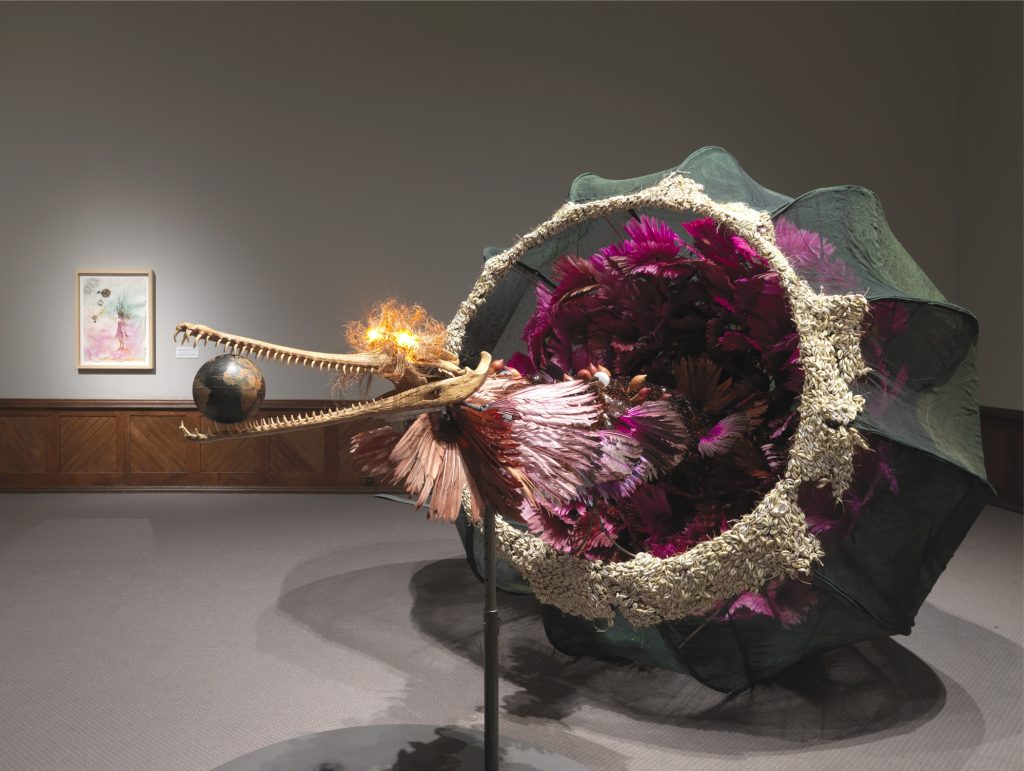Digvijay Nikam
Migration – forced and otherwise – of humans and of objects, entangled with the questions of ethnicity and race, is the defining feature of the modern globalized world. “How should art respond to it?” is the question that the diasporic artist Rina Banerjee tries to probe through her work. Born in 1963 in Kolkata, India, and having lived briefly in Manchester and London, she later shifted to New York where she has been living for the past 50 years. She completed an M.F.A. in Painting and Printmaking from Yale School of Art in 1995 and recently returned to teaching as a critic for the School.
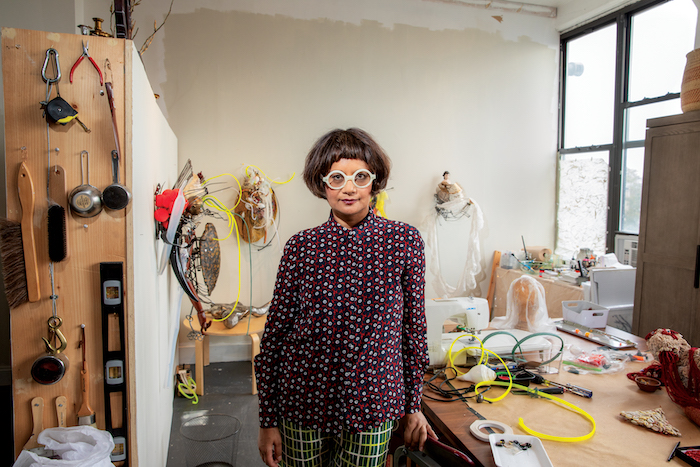
Courtesy of Erin Patrice O’Brien
Despite her extended stay in the United States, Banerjee still finds herself a foreigner to the land. This sense of estrangement is not always a cause for lament given Banerjee’s celebration of her multinational and ethnically plural migrant identity which allows her to escape the confines of straight-jacketed identities and connect to the variegated concerns of the globe. This fusion of multiple cultures informs her vibrant sculptural installations and richly coloured drawings and paintings both in their content as well as their material composition. The sculptures employ a wide range of globally sourced materials, textiles, colonial/historical and domestic objects while the drawings and paintings draw inspiration from Indian miniature, Chinese silk paintings and Aztec drawings.
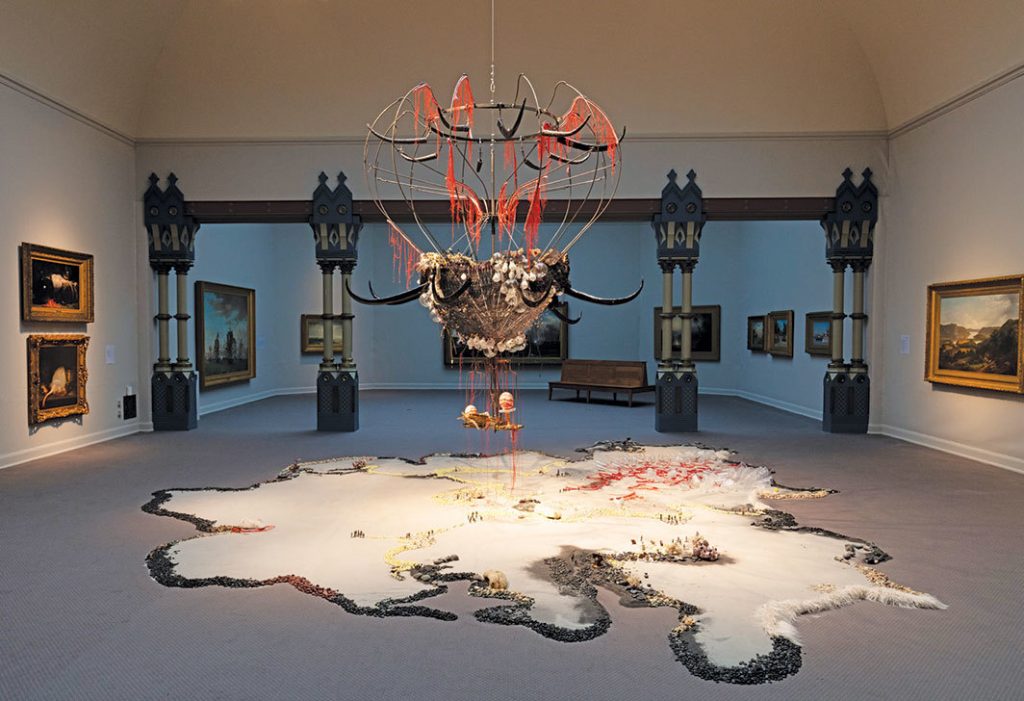
Courtesy of Barbara Katus
Banerjee is deeply interested in the histories that have to do with the movement of people and goods across the world. The history of imperialism in its close relationship with capitalism has been at the center of her investigation. In her 2013 installation, A Small World, which was created partly in response to Hurricane Sandy which caused immense damage to parts of lower Manhattan in 2012 where she lives, Banerjee brings histories of migration into conversation with their disastrous ramifications on the world’s aquatic system. The full title of the sculpture is a poetic piece in itself, presenting the reader-viewer with her concerns:
“a world Lost: after the original island, single land mass fractured, after populations migrated, after pollution revealed itself and as cultural locations once separated merged, after the splitting of Adam and Eve, of race black and white, of culture East and West, after animals diminished, after the seas’ corals did exterminate, after this and at last imagine water evaporated…this after Columbus found it we lost it imagine this.”
Constituted of a pastiche of materials including textiles, seashells, plastic cups, feathers, bulbs, pebbles, and rings of horns, the sculpture appears curiously solid and powerful yet simultaneously fragile and light. This irreconcilable duality is replicated in the visual appeal of the sculpture itself – a marker of her style – which is inviting in its abundant frenzy yet displeasing in its ghastliness. An embracing of the messiness of contradictory meanings and impulses is at the heart of her work given her provocation that the globalized world is not a “cohesive, singular space” which we are in control of.
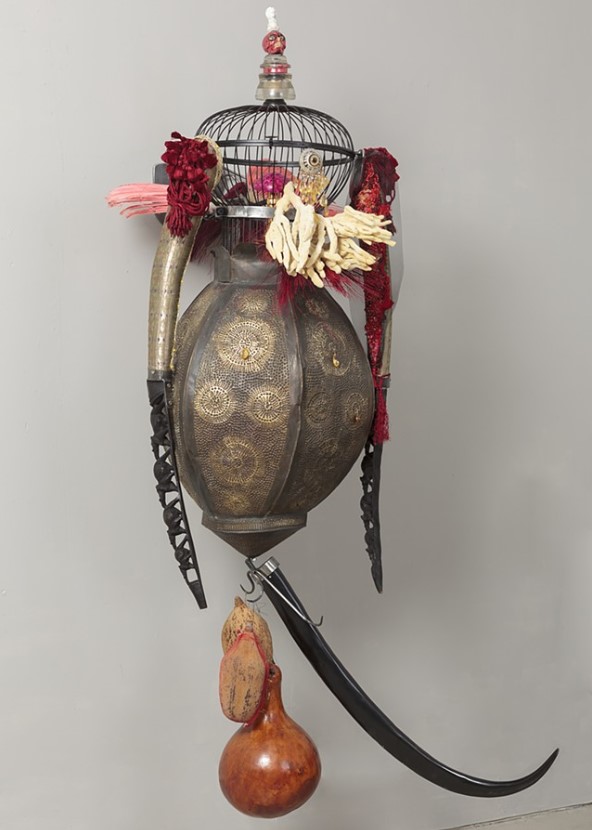
Courtesy of the artist
Histories of movement are not only provenances to generate cultural diversity but are also histories of exodus, of enforced relocations, uprooted populations, of circulations of bodies due to war, terrorism, and poverty. Banerjee tried to explore these multifarious ideas of movement in her exhibition titled Human Traffic which was first exhibited in 2015 at the Galerie Nathalie Obadia, Paris. It comprised of 13 objects right from monumental sculptures to large-scale wood panel paintings and multimedia work on paper. In one of her sculptures poetically titled “Soldier: overseas and out of place his species seeded dead to grow as commonplace, bore beautiful flowers of wound, carnage discovered a resin sticky like sweat. He had courage and loyalty when everyone wept and came home emptied while we slept” she deals with the carnage and trauma of war. The body of the structure comprises primarily of a porous brass lantern – whose indented surface reminds one of the bullet holes – with a cage on top of it, onto which has been positioned a red skull and a figurine representing a child which, as another observer as noted, might be a nod to the decrepit situation of dislocated and abused children.
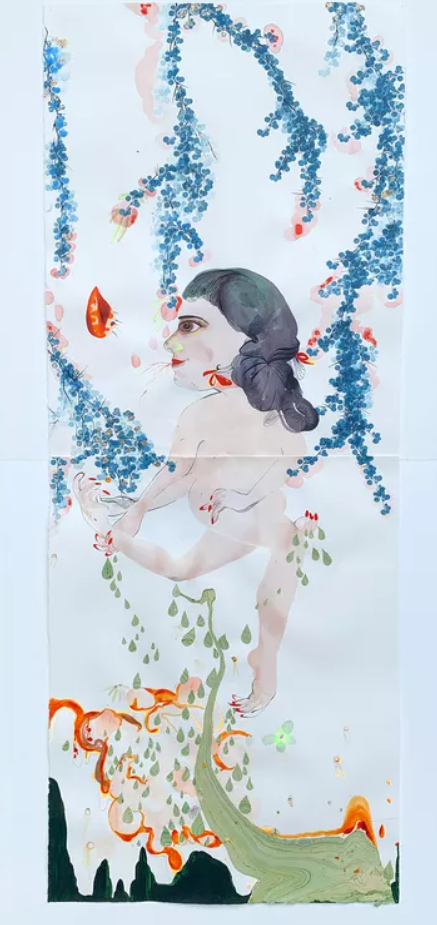
Courtesy of Artsy
Conjuring the contradictory space of circulation/movement, one of her paintings titled Petty Crime, shame on her mind (2014) highlights the precarious condition of women, who are often the first whose autonomy is compromised in conditions of migration.
Through her incredibly meticulous and colorful works, Banerjee repeatedly foregrounds the idea that the ever-present global practice of movement has gained an unprecedented force in our recent history given the tremendous influx of technologies, the multiplicity of networks as well as the consumerist power of Western countries over those of the East, which is relentlessly reshaping and complicating – among various other things – questions of authenticity, identity, and community. In doing that she reminds us, pressingly, of the smallness of this world.
Currently, her exhibition Take Me to the Palace of Love curated by Romita Ray is being exhibited at the Syracuse University Art Museum. The exhibition is an attempt at rescuing the power of love and probing its capacity to ameliorate the inequity and ecological devastation that plagues the planet right now. The exhibition includes one of her noted installations, a reimagined Taj Mahal made out of pink plastic wrap. The Pink Taj, as it is affectionately known, is a portable object which like the artist herself, is diasporic.
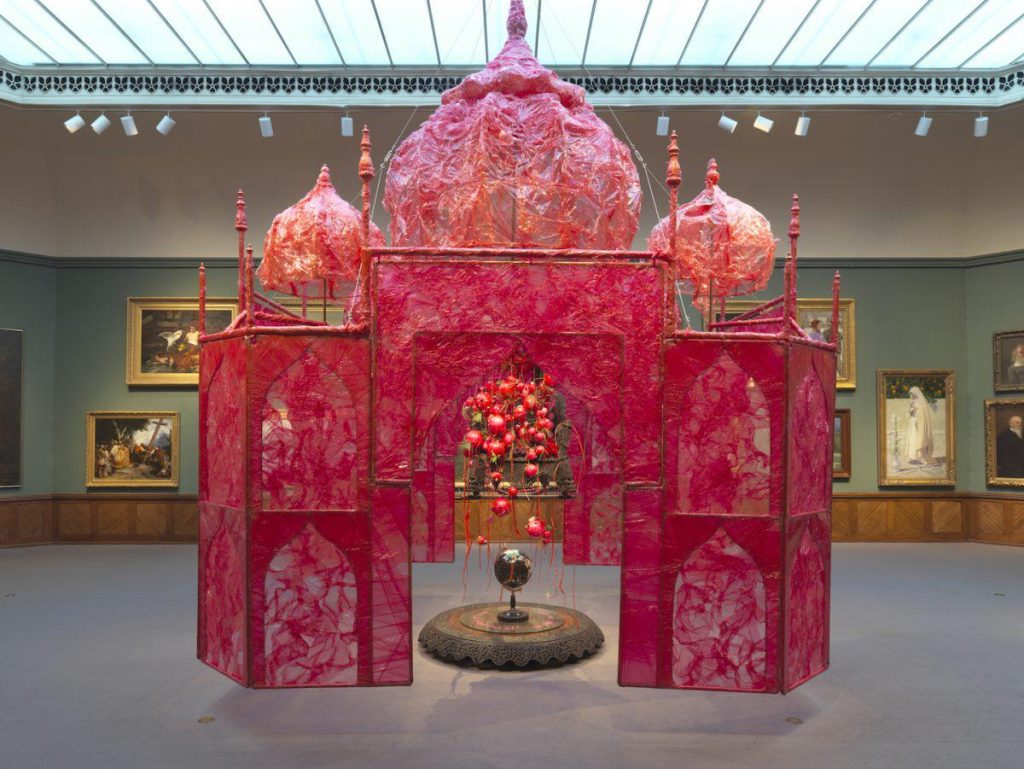
Courtesy of PAFA Archive


